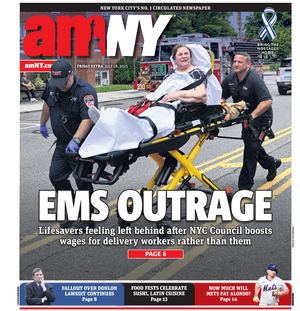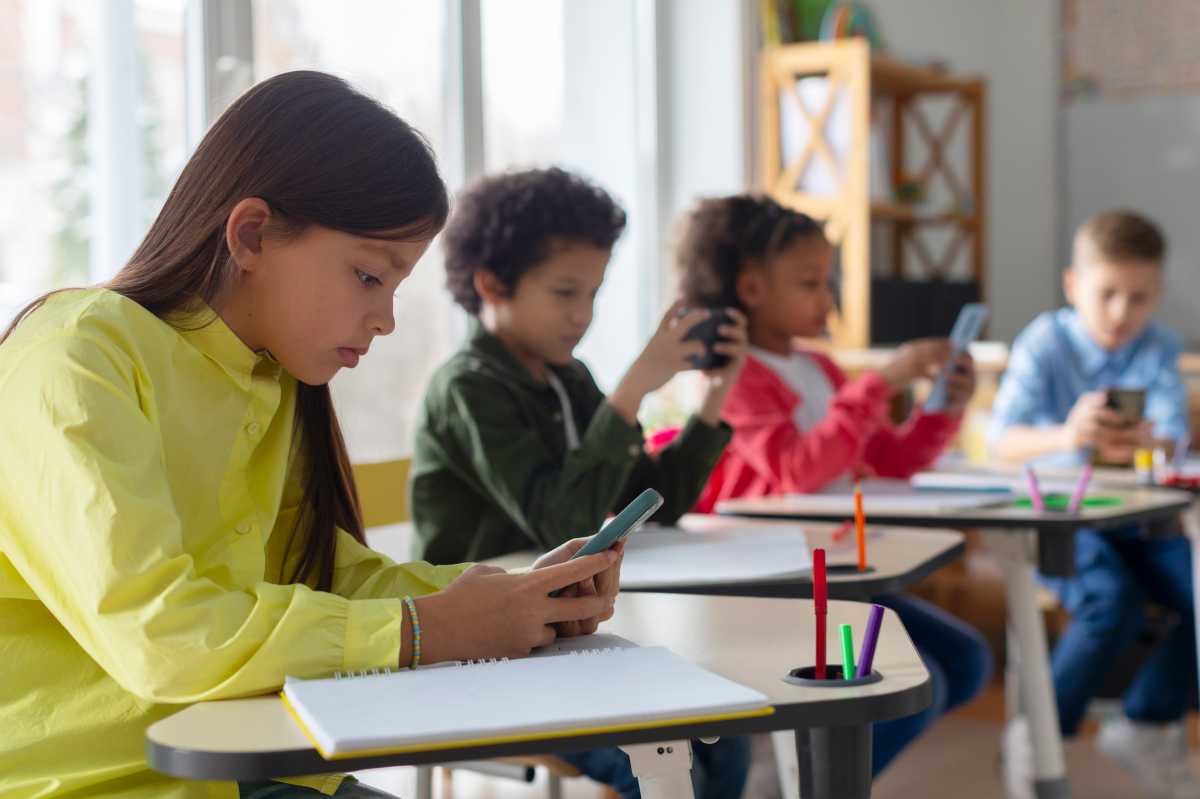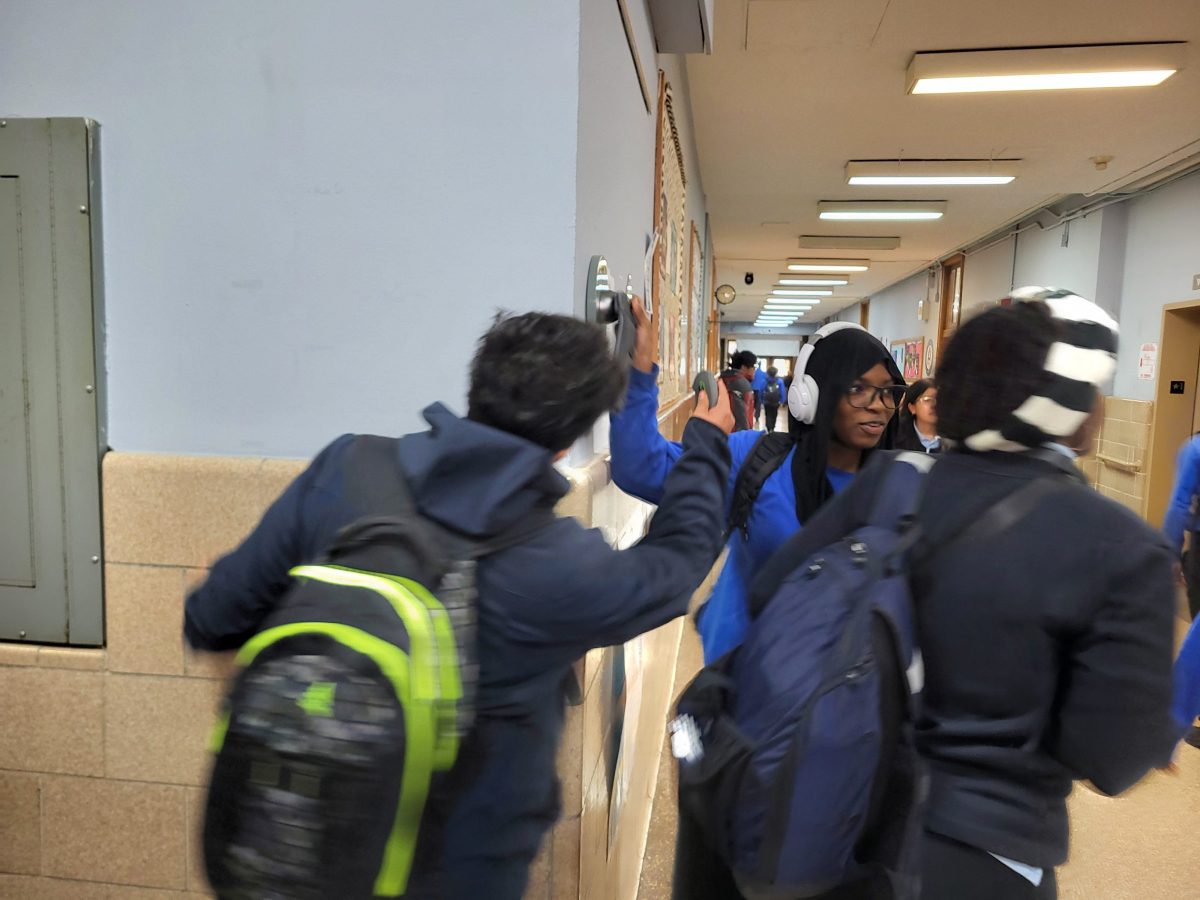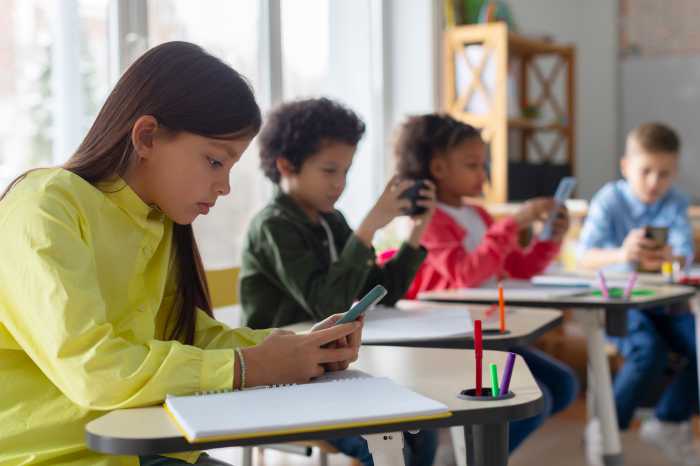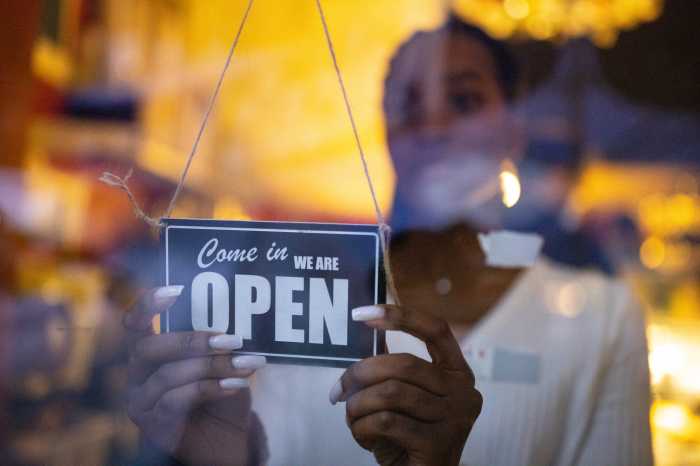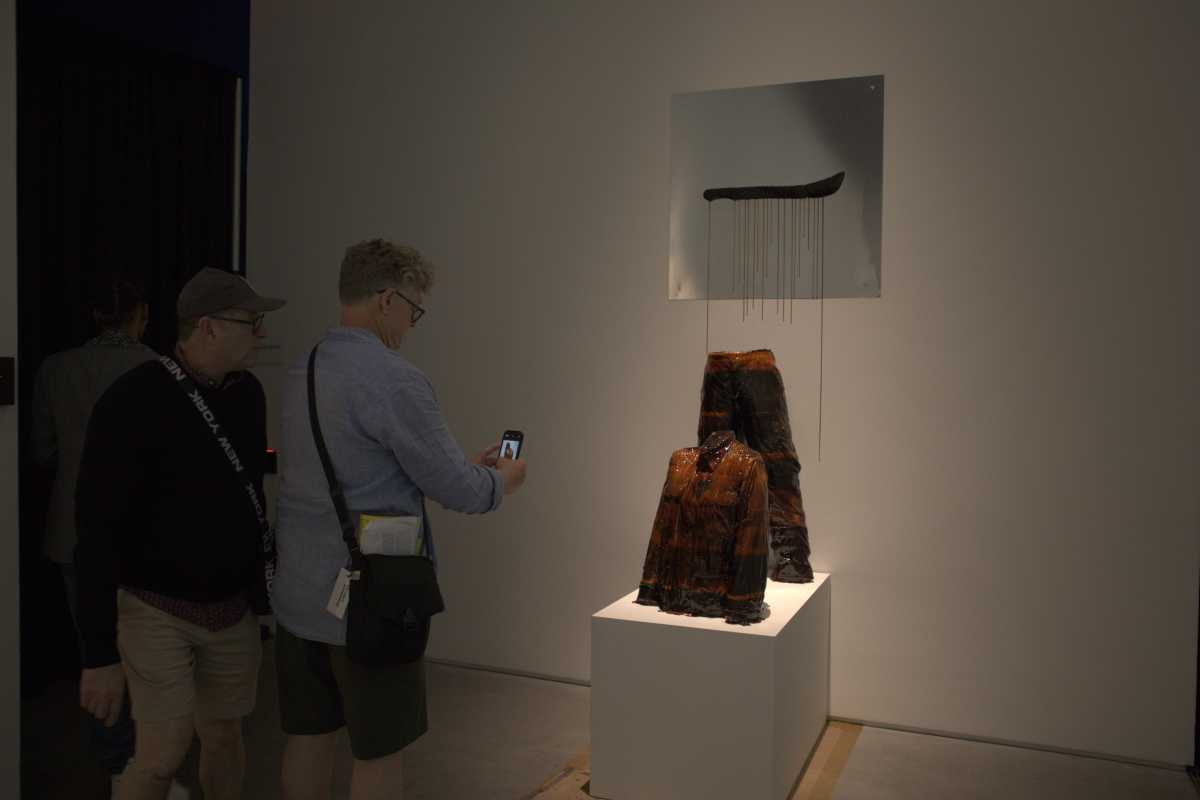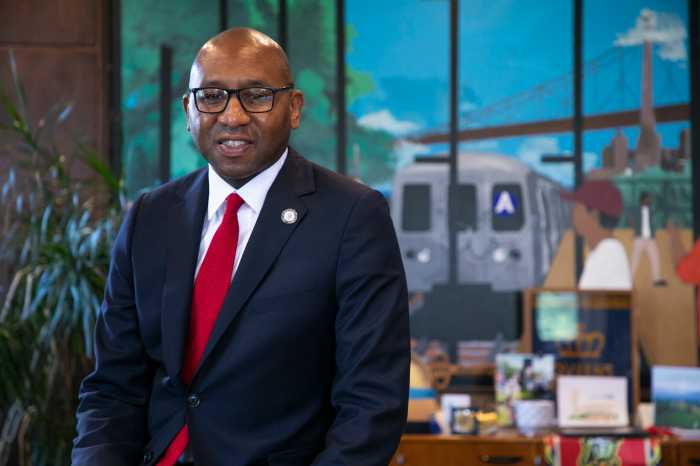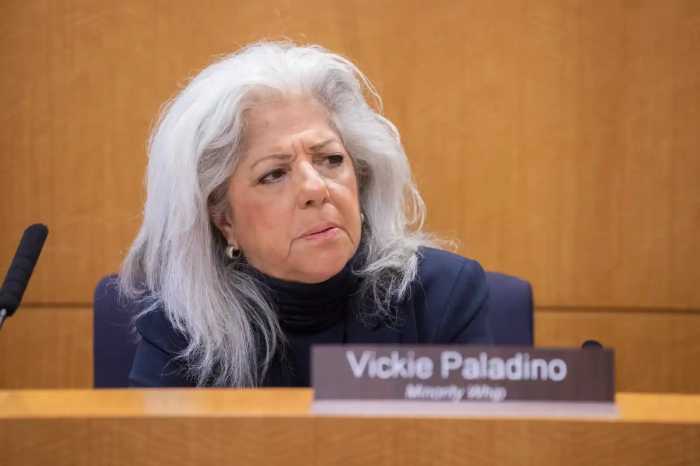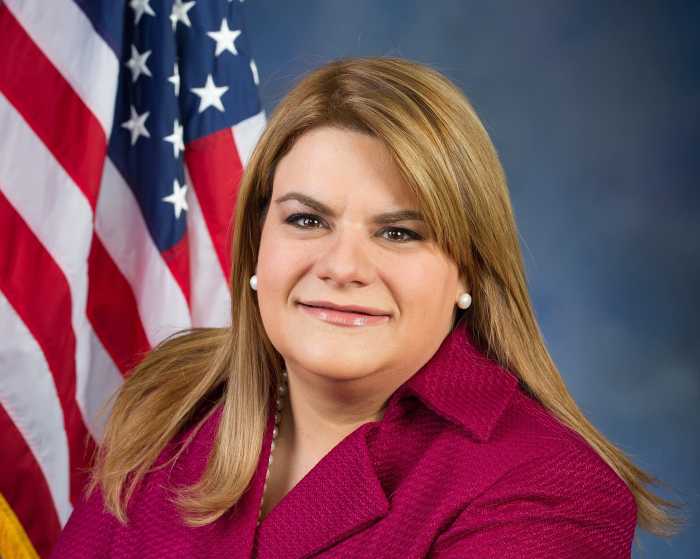New York City Public Schools are gearing up for the implementation this fall of a classroom cell phone ban that will prohibit public school students from using their cell phones during school hours.
Gov. Kathy Hochul and NYC Public Schools Chancellor Melissa Aviles-Ramos held a roundtable discussion with teachers, administrators, and students on Wednesday morning to discuss the law and its implementation.
Hochul announced the new policy, which applies to all public schools in New York state, in May. The policy seeks to “target addictive social media feeds.” Hochul enacted the policy after speaking with stakeholders about the impacts of cell phones in classrooms and compiling information for her report, “More Learning, Less Scrolling: Creating Distraction-Free Schools.” Schools with students through grade 12 are required to have implementation plans ready by Aug. 8.
“Our young people succeed when they’re learning and growing, not clicking and scrolling – and that’s why New York will be ready to implement bell-to-bell smartphone restrictions on the first day of school,” Hochul said in a Wednesday news release. “I’m pleased that most school districts across the state have either already implemented or are finalizing their distraction-free policy – and my team continues to provide the resources and tools to ensure every district publishes their policy by the Aug. 1 deadline.”
‘Distraction-Free’ days
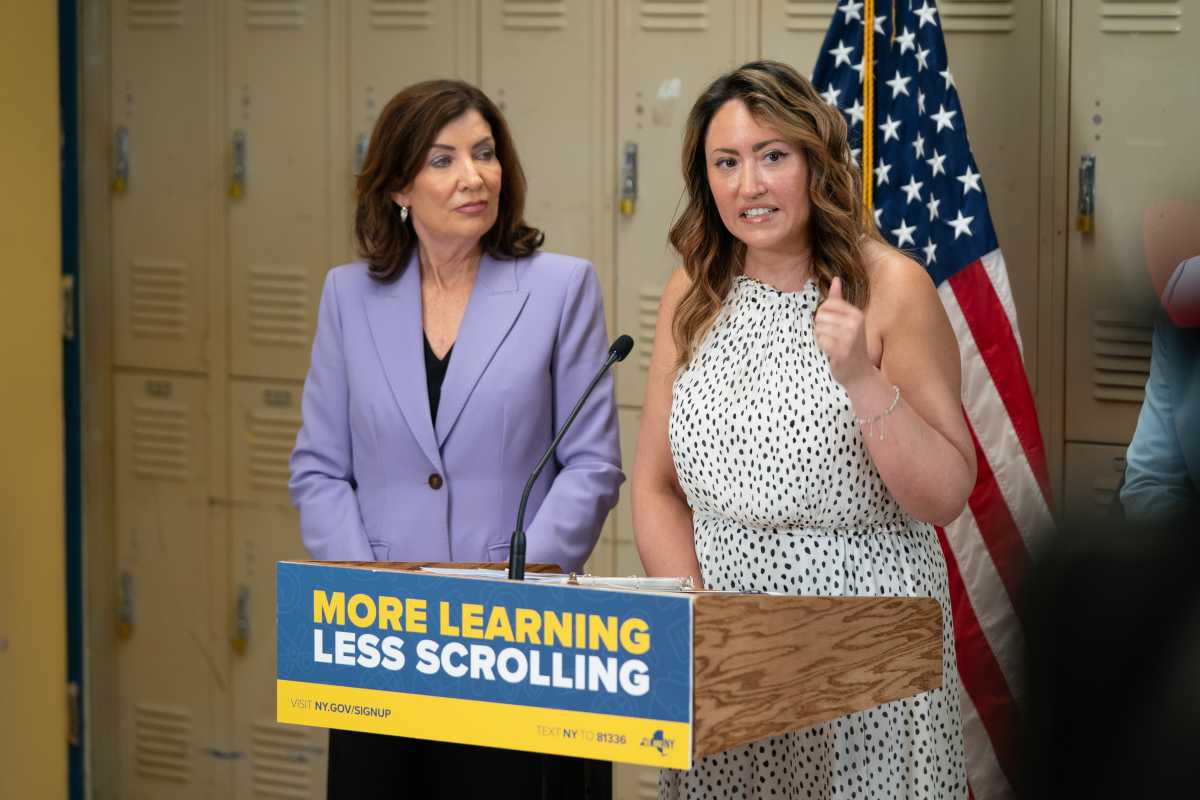
The “More Learning, Less Scrolling” report cited statistics from the Surgeon General regarding phone use among teens. It highlighted that 95 percent of American teenagers have smartphones and receive, on average, 250 notifications a day. Heightened phone use, particularly at school, can damage attention span, information retention, and energy level. Hochul, school leaders, and state lawmakers hope the new legislation can improve learning in public schools.
“As New York City Public Schools works to develop an updated cell phone policy for our schools, one thing has been clear: we must remain guided by the diverse needs and input of our school communities, union partners, elected officials, school staff, and most importantly, our students,” said Aviles-Ramos.
Hochul recently launched a website about the new “Distraction-Free” phone policy. The website answers frequently asked questions about the policy and provides a toolkit for administrators and teachers. With the deadline for implementation plans approaching, the government and the United Federation of Teachers are working to prepare schools for the new rule.
The new website also points schools to examples of school cell phone bans in other cities, including Buffalo and Syracuse. Though schools will not be held to specific enforcement strategies, the government is encouraging teachers and administrators to communicate heavily with parents and caretakers about the policy, hold listening sessions with community stakeholders, and ensure that information about the policy is easily accessible to students and parents.
The legislation also allows individual schools to develop their own plans for storing cell phones during the day.
“If we get the rollout right, balancing the need for focus during the day with peace of mind after school and in emergencies, then we have the opportunity to create a safer and more connected school experience for every student,” said Council of School Supervisors and Administrators President Henry Rubio.
The new policy will mandate that schools allow parents to contact their students throughout the day through other forms of contact and require teachers, parents, and students to be involved in policy development. With the legislation, Hochul secured $13.5 million for schools that need assistance purchasing storage equipment for cell phones.
“The science is clear: Our children’s mental health is being damaged by the endless stream of social media they are exposed to on their cellphones and devices,” said United Federation of Teachers President Michael Mulgrew. “With this new law, we hope to make schools a safer space, free of the distractions that get in the way of teaching, learning, and the human connection.”
